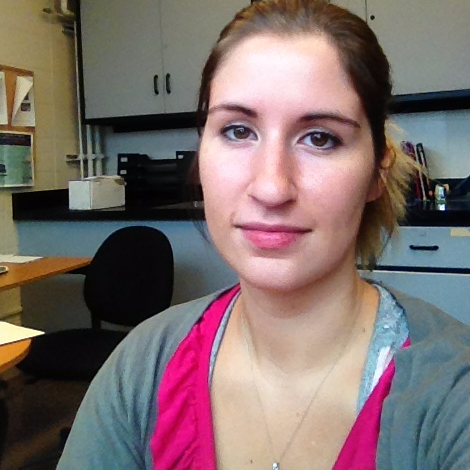

Presentation

La Chaire de recherche en neuroanatomie chimiosensorielle (CRNACS) de l’Université du Québec à Trois-Rivières (UQTR) a été créée en 2015. Sa mission consiste à étudier la physiologie, la pathologie et la psychologie des sens qui permettent la perception de notre environnement chimique. Les recherches portent donc sur l’odorat, le gout et le système trigéminal.
Les activités de la CRNACS s’exercent à deux endroits :
- Le laboratoire de Trois-Rivières est situé au Département d’anatomie de l’UQTR et fait partie du groupe de recherche Cognition, neurosciences, affect et comportement (CogNAC). Ce laboratoire vise à comprendre le fonctionnement des sens chimiques, c’est-à-dire l’odorat et le gout.
- Le laboratoire de Montréal est situé au Centre de recherche de l’Hôpital du Sacré-Cœur de Montréal et fait partie du Centre d’études avancées en médecine du sommeil (CEAMS). Ce laboratoire vise à comprendre les effets de différentes maladies sur les sens chimiques.
La Chaire de recherche vise, entre autres, à répondre aux questions suivantes :
- Comment perçoit-on les odeurs, les saveurs et les flaveurs ?
- Quels facteurs influencent la perception des odeurs et des saveurs ?
- Comment le cerveau traite-t-il les odeurs, les saveurs et les flaveurs ?
- Comment les odeurs influencent-elles notre humeur ?
- Des tests olfactifs permettent-ils un dépistage précoce de maladies neurodégénératives (comme les maladies d’Alzheimer et de Parkinson) ?
- Quels effets un entrainement olfactif a-t-il sur le cerveau et ses fonctions ?
Partnerships
Dans le but de faire progresser nos recherches, nous mettons sur pied des partenariats de recherche avec différents acteurs du secteur privé. Pour en savoir davantage sur le sujet, consultez la section Partnerships.
Go to the sectionFAQ
Pour mieux comprendre la portée de nos travaux, une série de questions-réponses a été rassemblée dans une FAQ.
Go to the FAQMedia Coverage
And Also…
-
Odorat et Parkinson : vers un diagnostic plus précoce?
Source: Ici Radio-Canada, Vidéo
Un chercheur de UQTR - Université du Québec à Trois-Rivières tente de faire un lien qui pourrait permettre de détecter la maladie de Parkinson de façon plus précoce. C'est que la plupart des gens atteint par cette maladie neurologique ont aussi une perte de l'odorat. Le reportage de Pierre Marceau.
-
Diagnostic de la maladie de Parkinson: possible avancée majeure à l'UQTR
Source: Journal de Montréal
Des chercheurs de l'Université du Québec à Trois-Rivières (UQTR) pourraient réaliser une percée importante concernant la maladie de Parkinson.
- Why a Baby Can Literally Be Like a Drug
Source: ATTN
Has your aunt ever tried to pinch your cheek or squish your face due to your unbelievable cuteness? It turns out there's some science to explain this.
Scientific Publications
And Also…
-
The role of trigeminal function in the sensation of nasal obstruction in chronic rhinosinusitis
The Laryngoscope Volume 126, Issue 5, pages E174–E178, May 2015
Trigeminal sensation (TS) within the nasal cavity is important for the perception of nasal airflow. The objective of this study is to examine whether impaired TS contributes to the sensation of nasal obstruction in patients with chronic rhinosinusitis (CRS).
-
Brain activations during pain: a neuroimaging meta-analysis of pain patients and healthy controls
Pain June 2016 - Volume 157 - Issue 6 - p 1279–1285
In response to recent publications from pain neuroimaging experiments, there has been a debate about the existence of a primary pain region in the brain. Yet, there are few meta-analyses providing assessments of the minimum cerebral denominators of pain. Here, we used a statistical meta-analysis method, called activation likelihood estimation, to define (1) core brain regions activated by pain per se, irrelevant of pain modality, paradigm, or participants and (2) activation likelihood estimation commonalities and differences between patients with chronic pain and healthy individuals.
-
Grey matter changes of the pain matrix in patients with Burning Mouth Syndrome
European Journal of Neuroscience Volume 43, Issue 8, pages 997–1005, April 2015
Burning mouth syndrome (BMS) is characterized by a burning sensation in the mouth, usually in the absence of clinical and laboratory findings. Latest findings indicate that BMS could result from neuropathic trigeminal conditions. While many investigations have focused on the periphery, very few have examined possible central dysfunctions. To highlight changes of the central system of subjects with BMS, we analysed the grey matter concentration in 12 subjects using voxel-based morphometry.
Team











